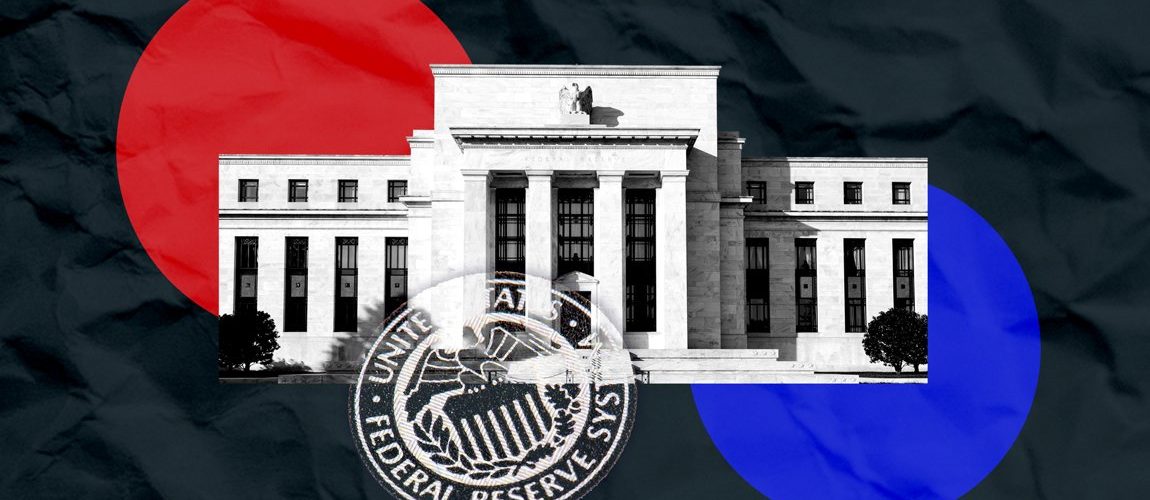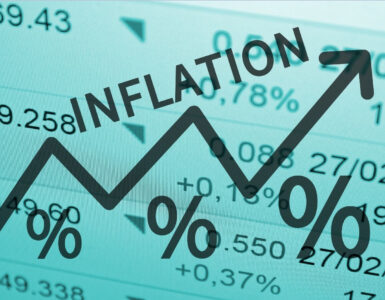- After a sharp jump in bond yields to start the year, rising rates could again set the tone for stocks next week.
- Big events include testimony from Fed Chairman Jerome Powell Tuesday and inflation reports on consumer and producer prices.
- The week also marks the beginning of the fourth-quarter earnings season, with big banks JPMorgan Chase, Citigroup and Wells Fargo reporting Friday.
The bond market could again set the course for the week ahead, after rapidly rising interest rates gave stocks a choppy start to the new year.
In the coming week, key inflation reports are expected, and Federal Reserve Chairman Jerome Powell is slated to testify Tuesday at his nomination hearing before a Senate panel, while the hearing on Fed Governor Lael Brainard’s nomination to the post of vice chair is set for Thursday.
The week also marks the start of the fourth-quarter earnings period with reports from major banks JPMorgan Chase, Citigroup and Wells Fargo on Friday.
“Inflation and the Fed continue to be the theme next week, but I do think we’re looking forward to have some earnings results to sink our teeth into,” said Leo Grohowski, chief investment officer of BNY Mellon Wealth Management. “We do think it’s going to be a good quarter and a good year for earnings, which is why we’re generally upbeat on the prospect for earnings.”
Grohowski said the markets will focus predominantly on the Powell and Brainard hearings, the consumer price index on Wednesday and the producer price index the next day.
“I think it’s unrealistic to assume the earnings become the page-one story, and the Fed monetary policy becomes the page-two story,” he said.
Stocks had a rough first week to 2022, as bond yields rose on both high expectations for Fed interest rate hikes and the view that the omicron variant of Covid is heading for a peak in a matter of weeks. Yields move higher when bonds sell off.
Tech was particularly hard hit, with the Nasdaq Composite down 4.5% for the week, while the Dow was barely negative, down just 0.3%. The Technology Select Sector SPDR Fund was off 4.6% as of Friday afternoon. But banks moved higher on the prospect that rising interest rates would help earnings. The Financial Select Sector SPDR Fund was up 5.4% for the week.
The S&P 500 ended the week at 4677, down 1.9%.
“This week was a wake-up call for what we’re going to be dealing with for 2022,” said Grohowski. “Lower returns and more risk. Welcome to the new year.”
Yields rose rapidly across the curve, but the dramatic move of the benchmark 10-year was particularly rattling for investors. The 10-year, which influences mortgages and other loans, rose from 1.51% in the final hour of 2021 trading to as high as 1.80% Friday.
That makes it the second-biggest move in the yield for the first week of the year in 20 years, according to Wells Fargo.
“It’s more dramatic than what we anticipated and the Fed’s pivot to a more hawkish stance has been the surprise,” said Grohowski. “Most market participants expected higher rates, less accommodative monetary policy, but when you look at the fed funds implying a 90% chance of a hike in March, on New Year’s Eve that was just 63%. There’s been a pretty dramatic change in tone picked up in the Fed minutes this week and markets are adjusting to that.”
Powell’s hearing on Tuesday will be a highlight of the coming week, not because he is expected to make news, but because he is likely to echo the tone of the Fed minutes, released this past Wednesday.
The central bank revealed in those minutes that officials are also discussing when to start shrinking its nearly $9 trillion balance sheet. The Fed has already forecast tightening policy with three quarter-point interest rate hikes this year, and downsizing its bond holdings would tighten it even further.
Bond investors also reacted to the disappointing December jobs report Friday by sending interest rates higher. There were just 199,000 jobs created last month, less than half of what was expected. But the unemployment rate fell more than expected, to 3.9% from 4.2%. Average hourly wages rose by 0.6%, or 4.7% year over year.
Economists blamed the weaker report in part on a lack of workers to fill jobs, but the Fed is expected to move to hike interest rates regardless.
“This is the Fed saying we’re at full employment. There is still a gap, but the wage surge was much more than anyone expected and heavily concentrated in low-wage jobs,” said Diane Swonk, chief economist at Grant Thornton. “We’re about 3.5 million shy of the previous peak, and the labor market is behaving as if we’re beyond full employment.”
Inflation will stay front and center with the CPI and PPI reports. Economists expect another hot month for both readings, though some economists believe inflation is close to its peak. November’s headline CPI of 6.8% was the highest since 1982.
Stock investors will also continue to watch yields. Tech and growth stocks are the most sensitive to rising rates because investors pay for the promise of future earnings. Higher rates mean the cost of money increases and that changes the calculus on their investments.
Grohowski expects the 10-year yield to reach 2.25% by the end of the year, though it has been moving faster than expected. “Getting there sooner causes more pain … in those longer duration equity sectors, like tech and the Nasdaq,” he said. “I do think that yields settle down and that tech comes back. I think we’re going to see really good earnings this year. Tech continues to be a beneficiary.”
Grohowski said the market could see a 10% decline in 2022, but he doubts that slump will happen in the near term because there is so much cash waiting to come into the market.
“I think this dry powder will be put to work. I think we’re off to a kind of rough start and a reset,” he said. “I think ultimately this reset of expectations is going to be a healthy one. I do think market participants are getting a very early in the year wake-up call after the high returns and low volatility of last year and a doubling of the market in three years. [But] it’s going to be much rougher sledding in the next 12 to 18 months.”
There are also three big Treasury auctions in the coming week, with the $52 billion 3-year note auction Tuesday, $36 billion in 10-year bonds Wednesday, and $22 billion in 30-year bonds Thursday.
The 10-year popped as high as 1.80% Friday, but could easily return to that level in the coming week. That puts it just above the 2021 high.
“In and around those levels, the market will try to find some short term support,” said Greg Faranello, head of U.S. rates at AmeriVet Securities. He added that the auction could be an event that helps cap the yield move for now.
Source: CNBC










